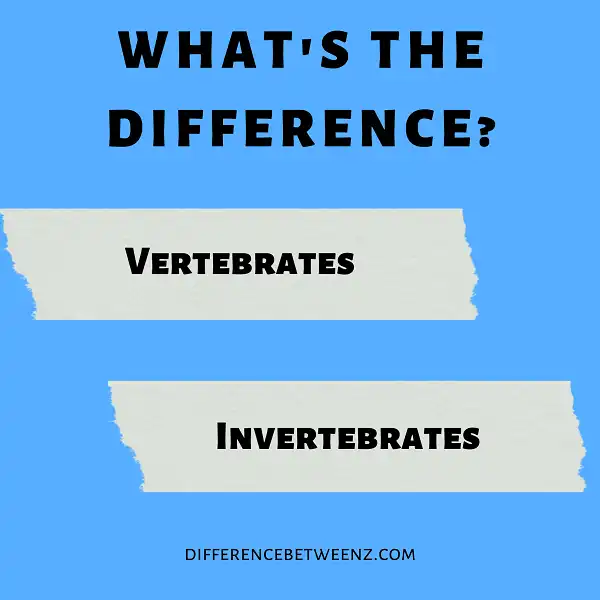There are many different types of animals in the world, and each group has its own unique features. One of the most obvious distinctions between groups is whether or not they have a backbone – vertebrates vs invertebrates. Let’s take a closer look at these two groups and some of the differences between them.
What are Vertebrates?
- Vertebrates are animals that have a backbone made of vertebrae, which protect the spinal cord. Vertebrates include fish, amphibians, reptiles, birds, and mammals. Fish are the largest group of vertebrates, with over 32,000 species.
- They live in water and have gills that extract oxygen from the water so they can breathe. Amphibians are vertebrates that spend part of their life in water and part of their life on land. They have moist skin and need to return to water periodically to wet their skin or lay eggs.
- Reptiles are Vertebrates that have dry, scaly skin and spend their entire lives on land. Birds are Vertebrates that have feathers and wings and can fly. Mammals are Vertebrates that have fur or hair and feed their young with milk from mammary glands. Humans are an example of a mammal. There are over 60,000 species of vertebrates.
What are Invertebrates?
- Invertebrates are animals that do not have a backbone or spinal column. This includes a wide variety of animals, from insects and worms to crabs and squid.
- Invertebrates make up the vast majority of animal species on Earth, and they play an important role in many ecosystems. Invertebrates can be found in nearly every habitat, from the coldest depths of the ocean to the hottest deserts.
- Some invertebrates, such as bees and butterflies, are well-known for their bright colors and interesting patterns. Others, such as krill and ants, are known for their huge numbers and their ability to live in complex societies.
- Regardless of their appearance or lifestyle, all invertebrates share one important trait: they are vital members of the Earth’s ecosystem.
Difference between Vertebrates and Invertebrates
Vertebrates and Invertebrates are two types of animals.
- Vertebrates are animals that have a backbone, while invertebrates are animals that do not have a backbone.
- Vertebrates include fish, amphibians, reptiles, birds, and mammals. Invertebrates include insects, crustaceans, mollusks, and worms.
- There are many differences between vertebrates and invertebrates. Vertebrates tend to be larger than invertebrates, and they have a more complex body structure.
- Vertebrates also have a more developed nervous system, and they can move more quickly than invertebrates.
- Invertebrates, on the other hand, are often smaller than vertebrates and they have a simpler body structure.
Invertebrates also tend to have a less developed nervous system, and they usually move more slowly than vertebrates. Despite these differences, both vertebrates and invertebrates are essential for the ecosystem.
Conclusion
Vertebrates are animals that have a backbone, while invertebrates do not. This is the most basic distinction between these two groups of animals. There are many different types of vertebrates and invertebrates, and each has unique features that set it apart from the others. While there are some similarities between them, understanding the differences is important for anyone who wants to learn more about animal classification.


